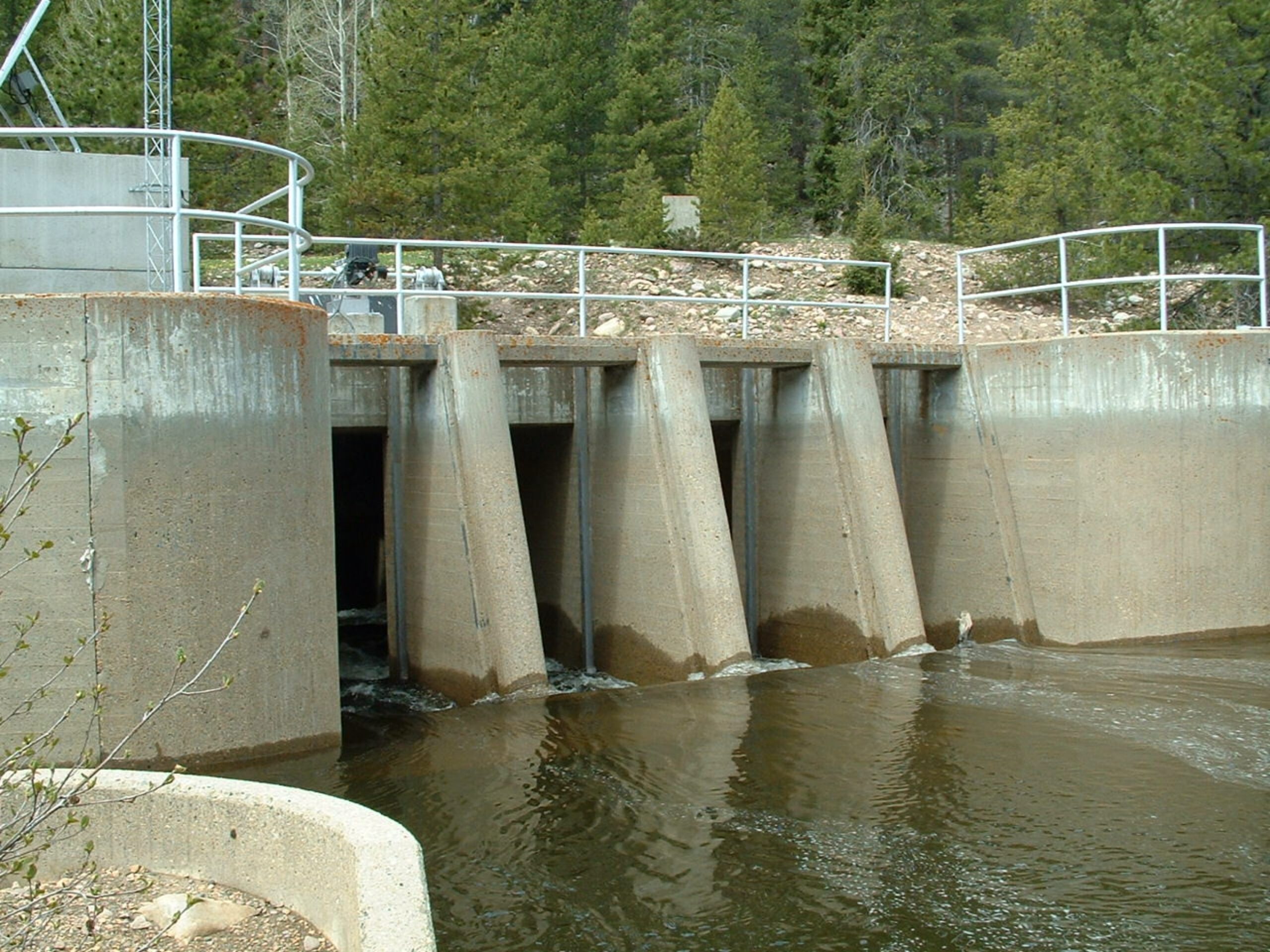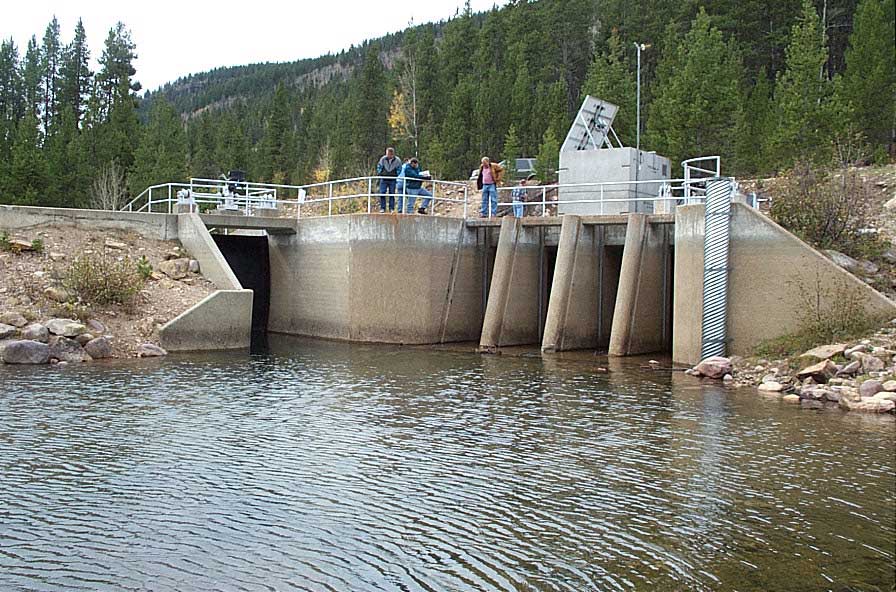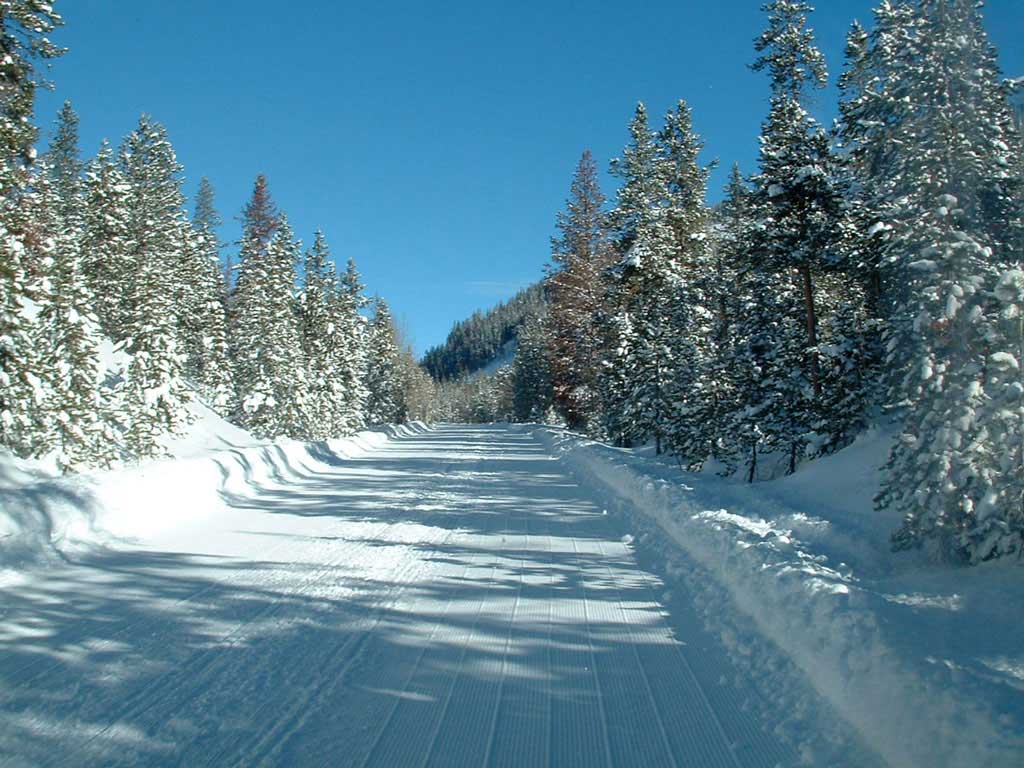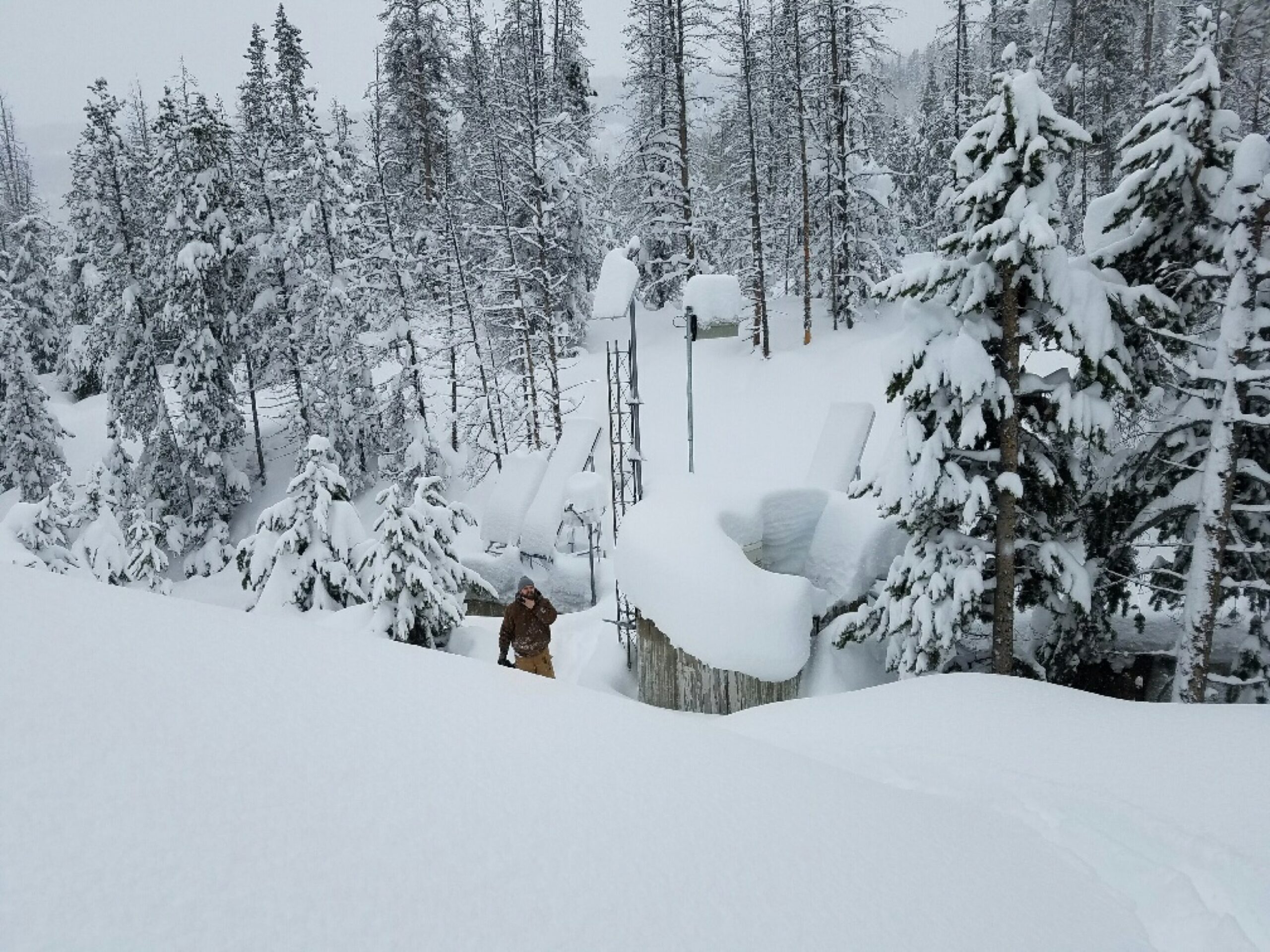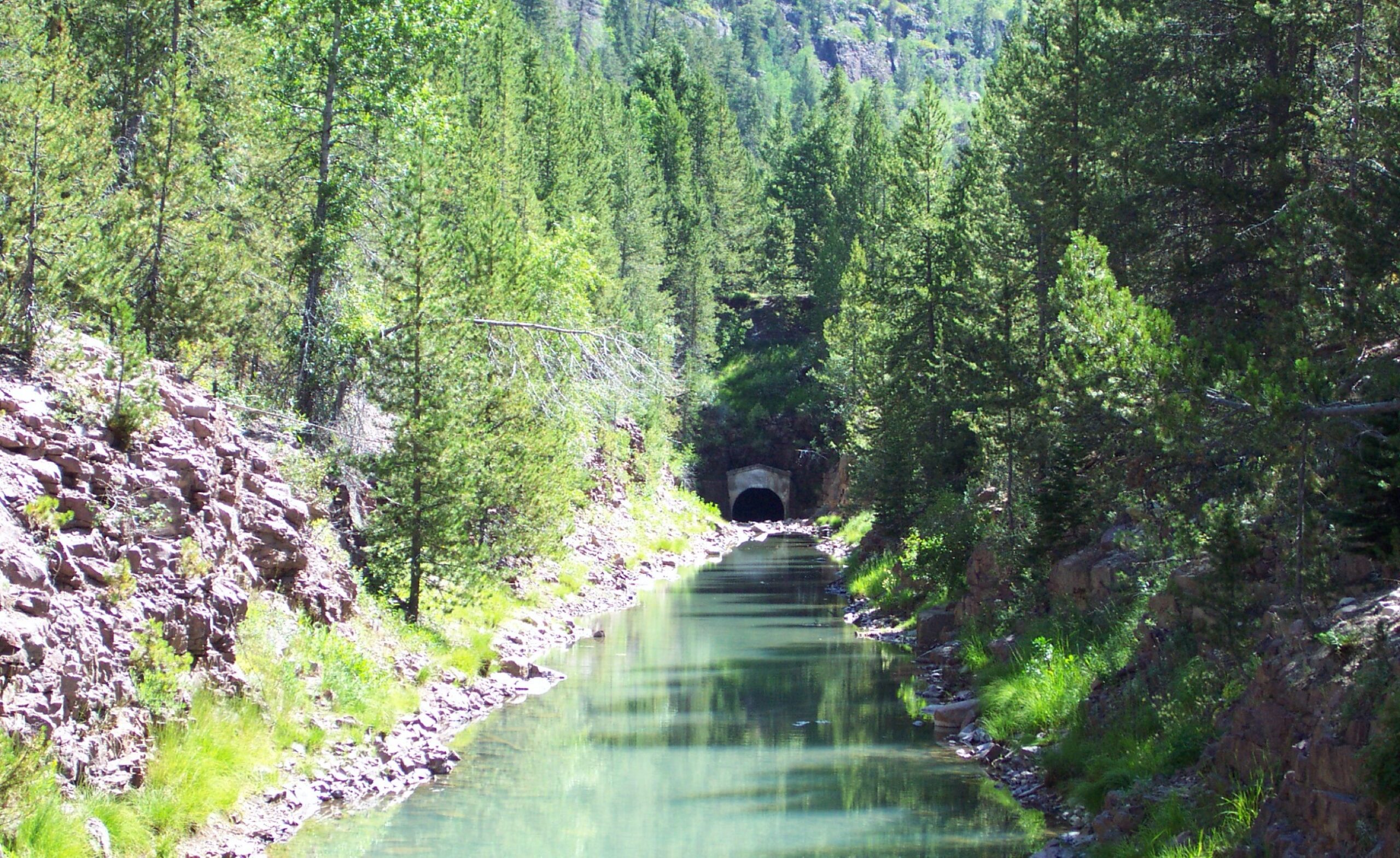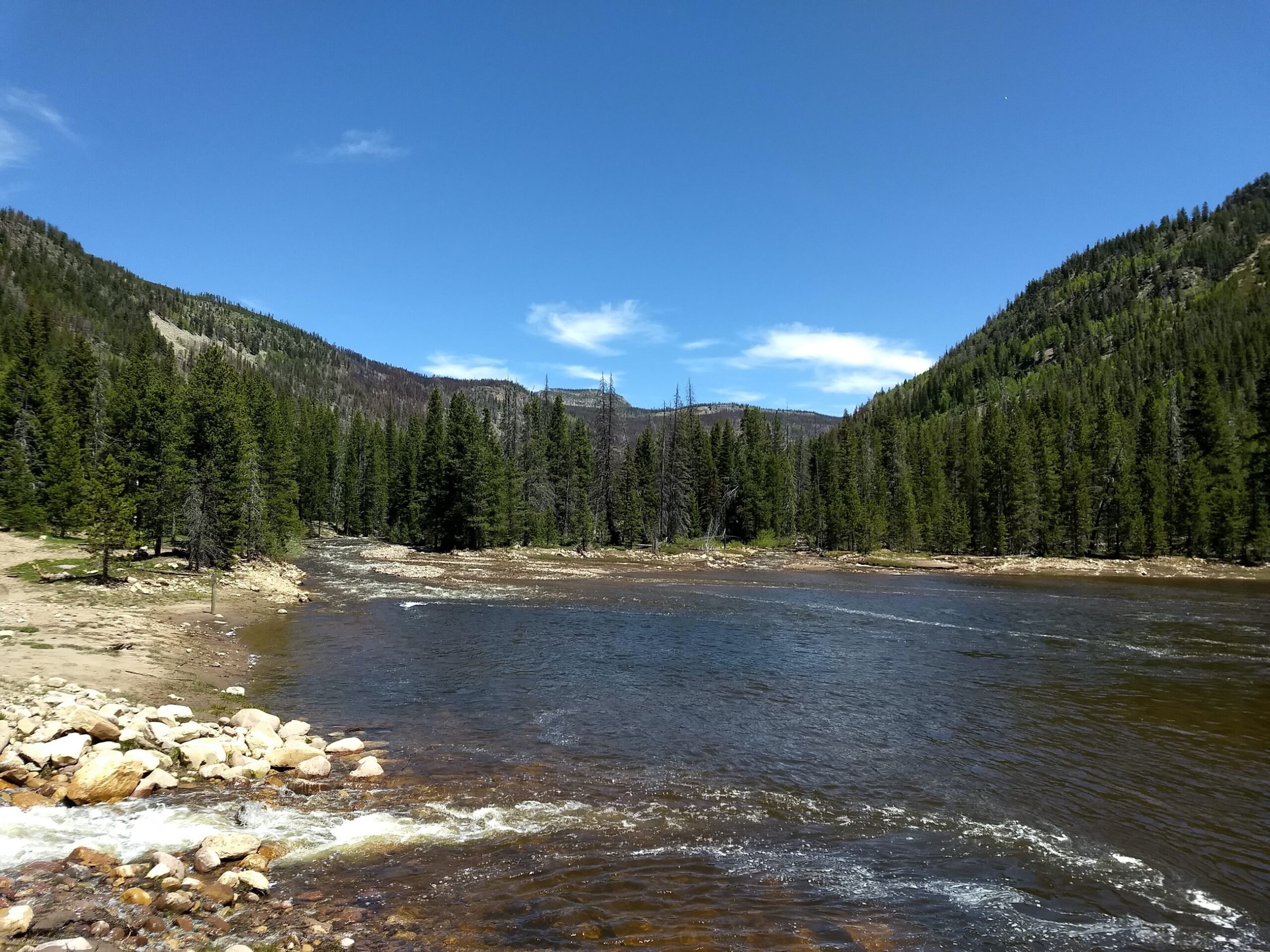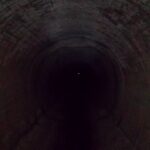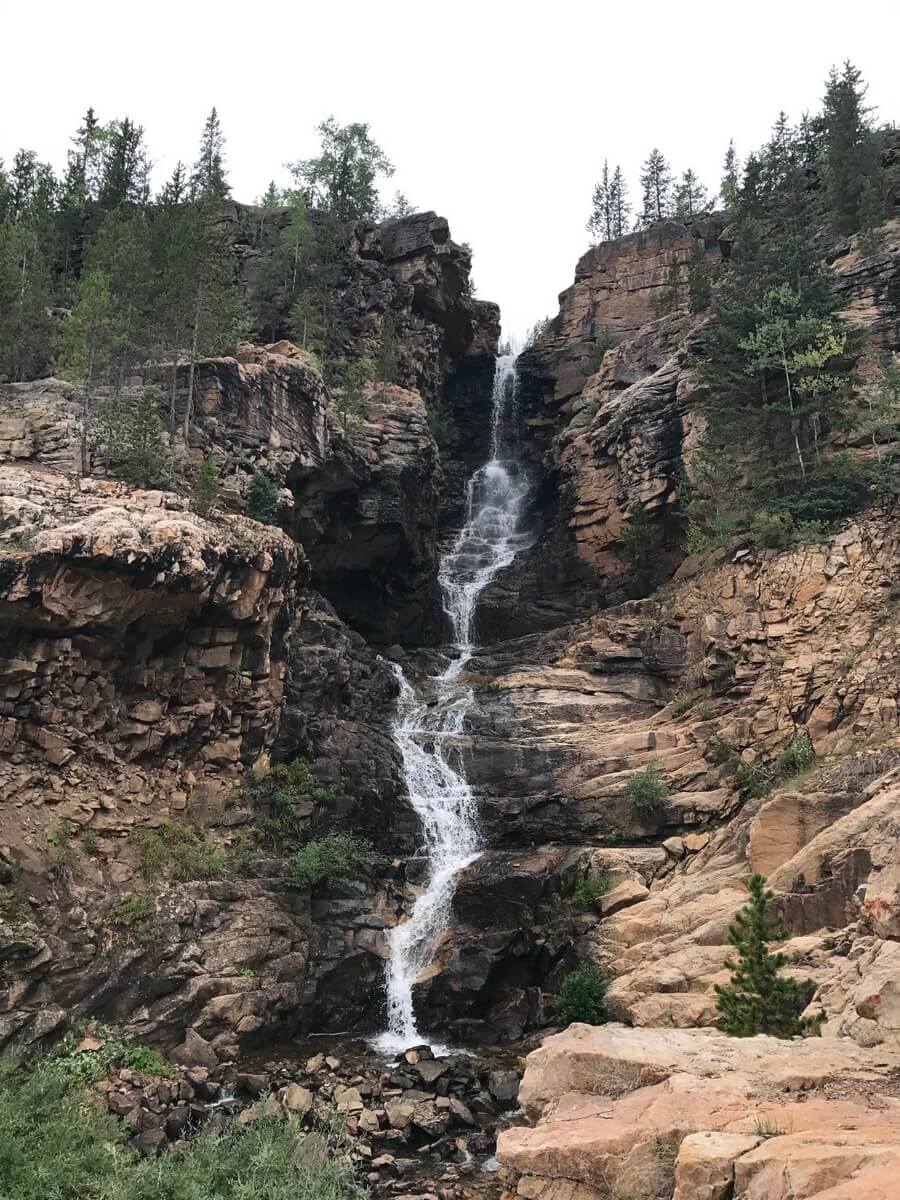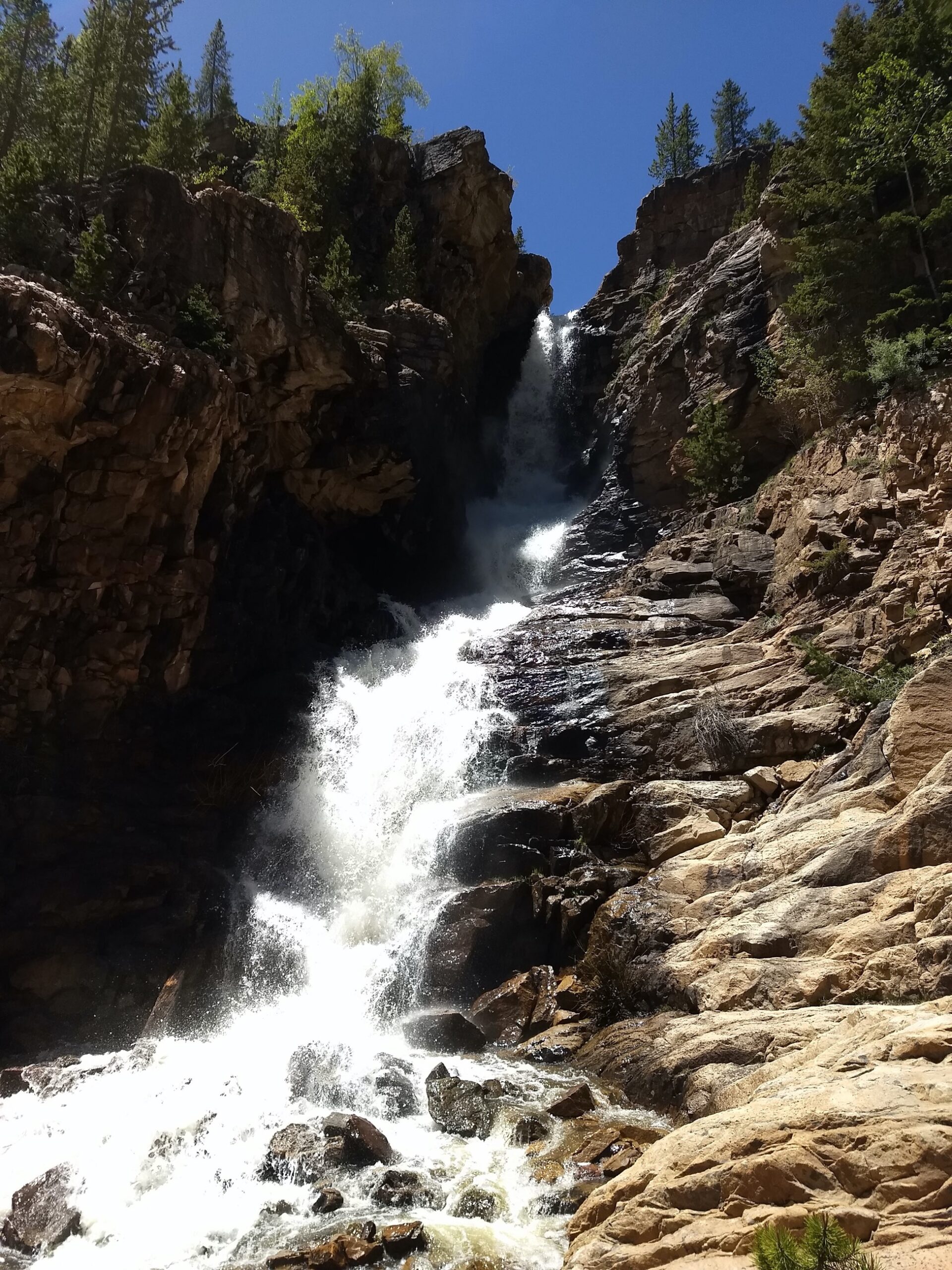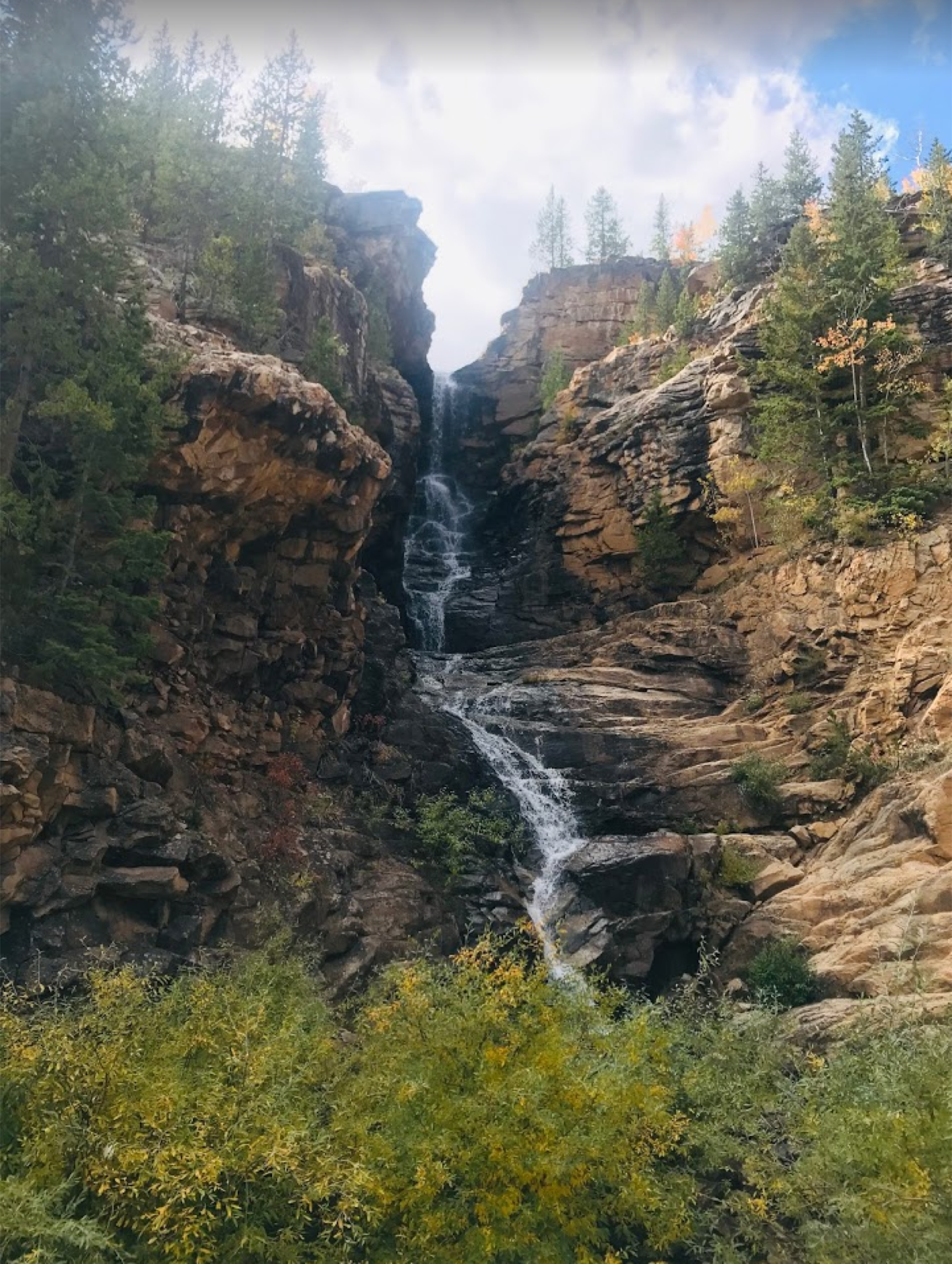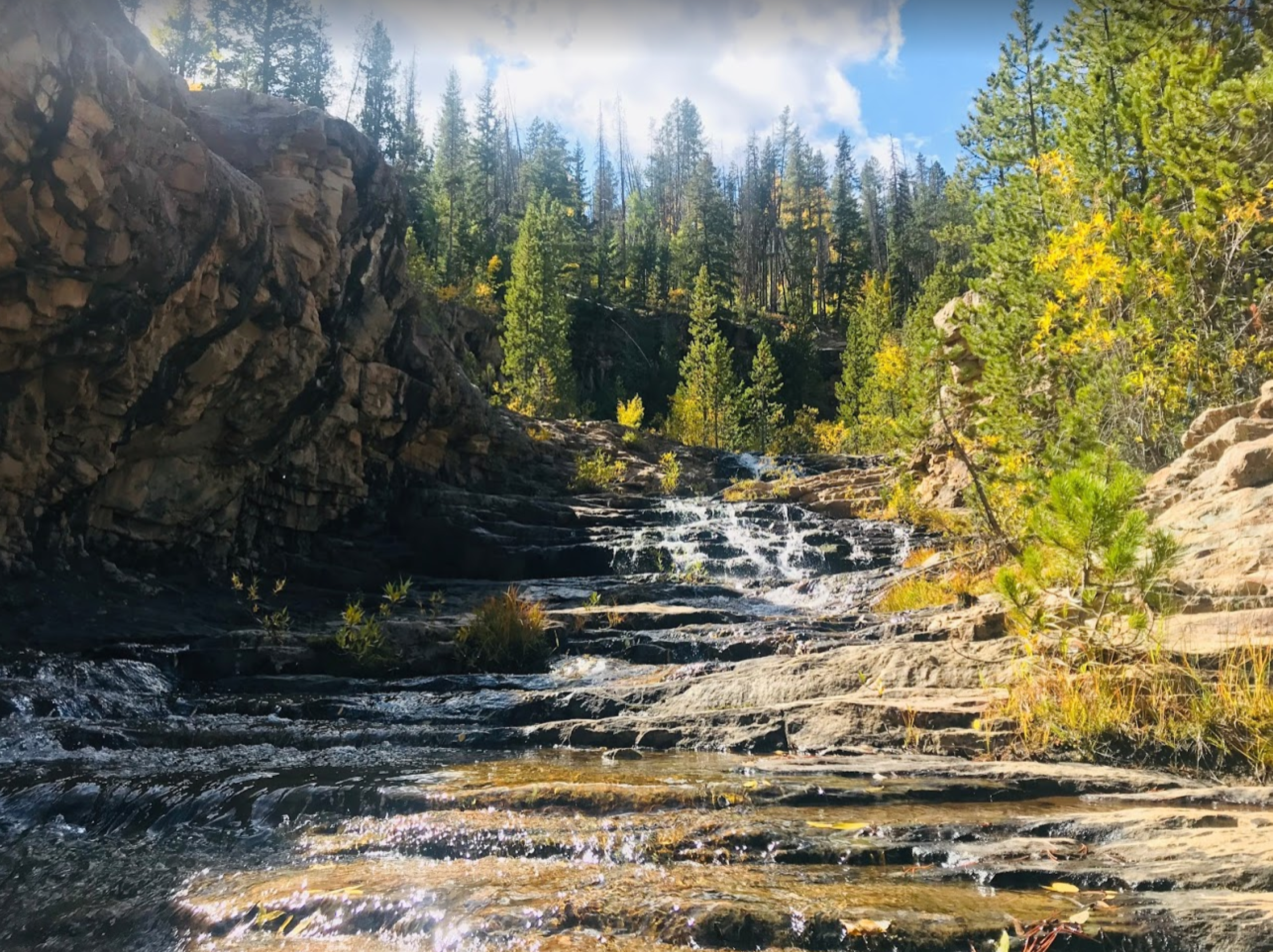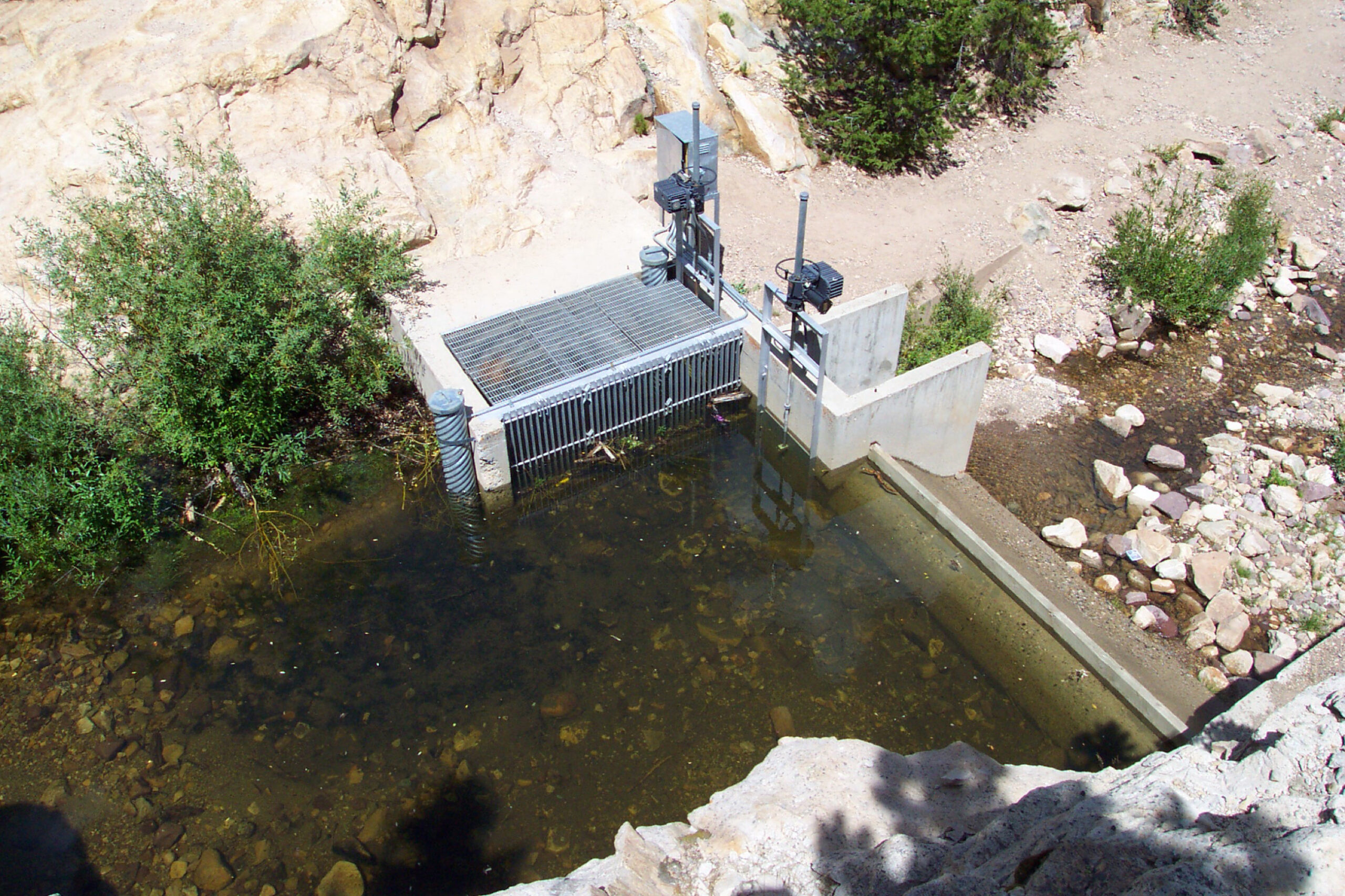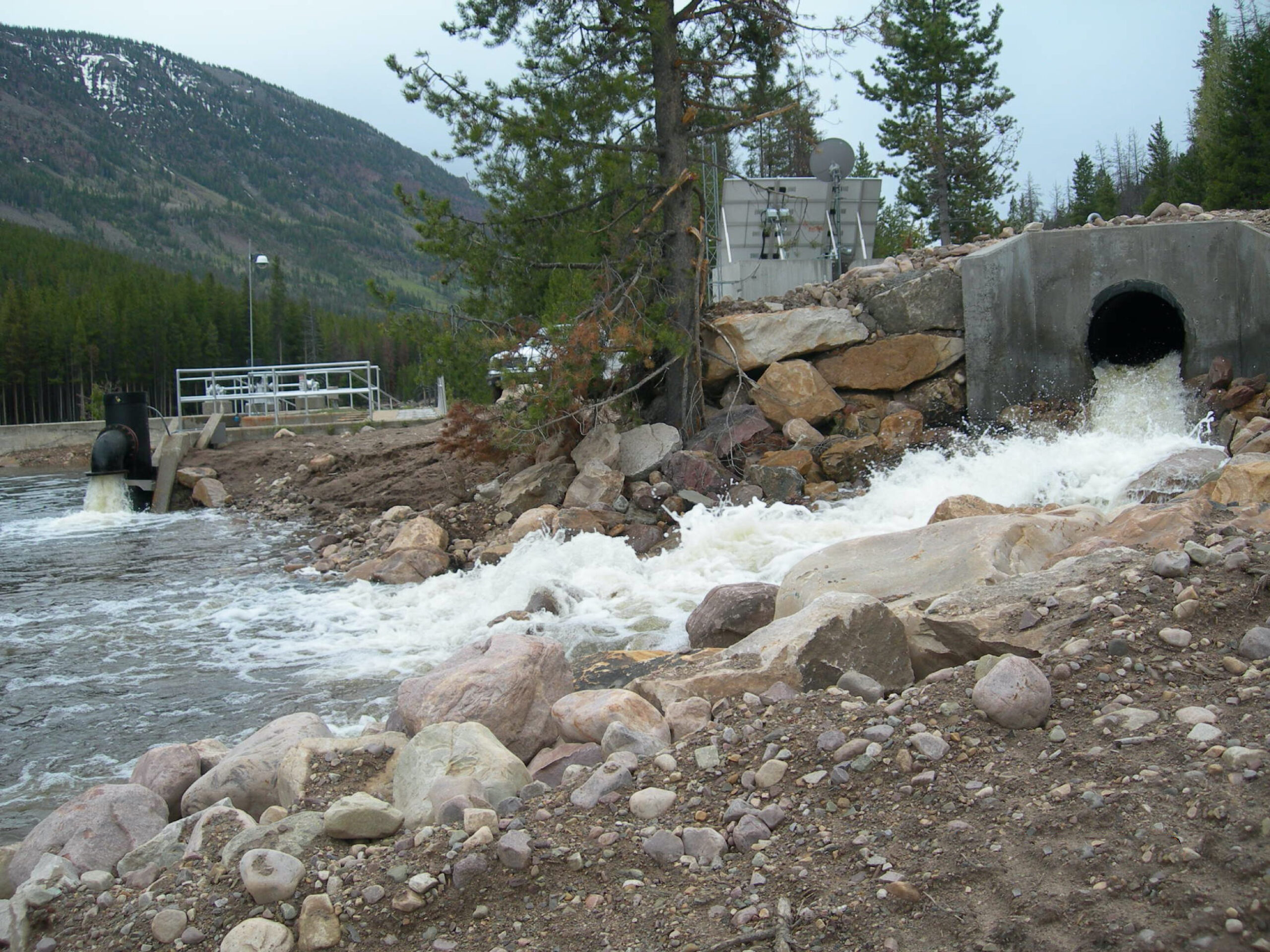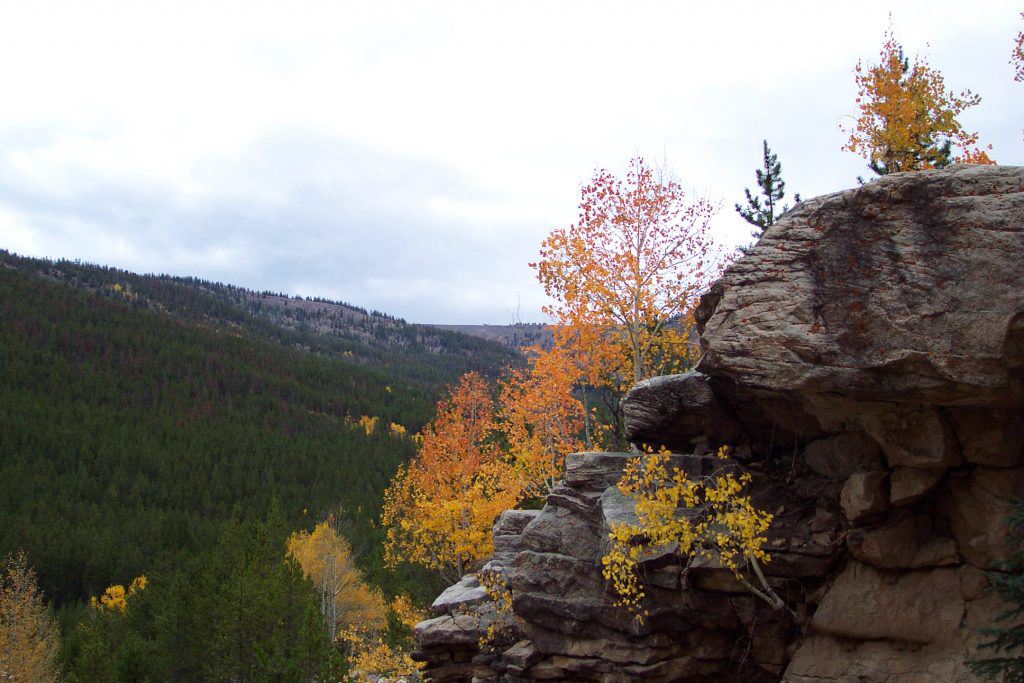Duchesne Tunnel System
The Duchesne Diversion and Tunnel were built to convey Provo River Project and Association water rights in the Duchesne River and Little Deer Creek to the Provo River for storage in Deer Creek Reservoir and delivery to the Association’s shareholders.
Duchesne Diversion
What is it?
The Duchesne Diversion Dam is a concrete and rockfill dam located on the north fork of the Duchesne River, approximately 21 miles east of Kamas, Utah in the Uinta mountains.
The Diversion slows or stops water flow in the Duchesne River with a remotely controlled gate that opens and closes based on the water level in the forebay, or the dam area. When the bypass gate is lowered, the water fills the forebay and another gate is opened, allowing the water to be diverted into the tunnel. Once the required water flow is reached for the tunnel, the bypass gate is opened and any additional flow is allowed to bypass the tunnel and continue down the Duchesne River.
Why was it built?
The Diversion was constructed in order to access Provo River Project water rights in the Duchesne River and its tributary, Little Deer Creek. The water is impounded and diverted into the Duchesne Tunnel or returns to the river flowing over the dam.
When was it built?
The dam was constructed in 1952.
How big is it?
The weir length of the dam is 270 feet and a diversion capacity of 621 cfs.
What is the Association’s responsibility?
The Association’s responsibility is to maintain the depth of the forebay by clearing out debris and layers of sediment. The Association removes any debris from the bypass and tunnel gates and ensures that the controls are working properly so water can be safely and efficiently diverted into the tunnel for use by shareholders.
Duchesne Tunnel
What is it?
The Duchesne Tunnel is one of the distinctive features of the Provo River Project. The tunnel is a 10-foot diameter, concrete-lined horseshoe-shaped rock tunnel that runs from the Duchesne Diversion through the Uinta Mountains to the Provo River—a distance of six miles.
Why was it built?
The Provo River Project owns water rights in the Duchesne River and its tributary, Little Deer Creek. The Duchesne Tunnel was built to convey that water from the Duchesne River to the Provo River. The water is stored in Deer Creek Reservoir where it is made available to the Association’s shareholders.
When was it built?
Construction on the Duchesne Tunnel began in 1948 but was halted in 1951 at the outbreak of the Korean War. Work resumed in 1953 and was completed in 1954. One team of workers started construction at the proposed inlet of the tunnel while another team started at the proposed outlet, planning to meet in the middle. It has been reported that team engineers, using only slide rules and transits, were so accurate in their surveying that when the two teams met near the middle of the tunnel, they were only inches off. This level of accuracy allows one to peer inside of the tunnel and see the other end, six miles away!
How big is it?
The Duchesne Tunnel is six miles long and 10 feet in diameter. It has a capacity of 621 cfs. The highest flows in the Tunnel are during the spring runoff.
What is the Association’s responsibility?
It is the Association’s responsibility to keep the Tunnel clear of debris to ensure water is running freely to the Provo River and perform upkeep on the machinery and structures at the Tunnel inlet and outlet.
Did you know? The Duchesne Tunnel is so straight that one can peer inside and see the other end, six miles away! Click the image to see the full-resolution version and the point of light in the middle.
Broadhead Diversion
What is it?
The Broadhead Diversion is a small dam that collects water from Little Deer Creek and delivers the water through a pipeline to the Duchesne River just above the Duchesne Tunnel inlet. The Broadhead Diversion is located approximately 21 miles east of Kamas, Utah, just downstream from the Duchesne Diversion and Tunnel.
Why was it built?
To access Association water rights in Little Deer Creek, Broadhead Diversion was built to deliver water to a point just above the Duchesne Tunnel where it is combined with flow from the north fork of the Duchesne River and sent through the Duchesne Tunnel to the Provo River. This water is stored in Deer Creek Reservoir for use by Association shareholders.
When was it built?
The Broadhead Diversion Dam was originally constructed in 1953, but had to be reconstructed in 1964 as a result of the Little Deer Creek Dam failure.
How big is it?
The concrete structure has a weir length of 15 feet and a diversion capacity of 71 cfs. The headworks include a screened 30-inch precast-concrete pipe controlled by a slide gate. The dam also includes a 3-foot by 4-foot slide gate sluiceway to bypass flow.
In 2009, the original 30” concrete transmission pipe was replaced with a 42” HDPE pipe. The original pipe had filled with rocks and debris that bypassed the original screens. The diversion screens were also upgraded for better debris removal.
What is the Association’s Responsibility?
The Association’s responsibility is to monitor and control the amount of water that is diverted into the pipe through sensors and remote controls. Association staff also maintains the gates, actuators, diversion structure and pipeline to ensure this equipment and these facilities function properly.
